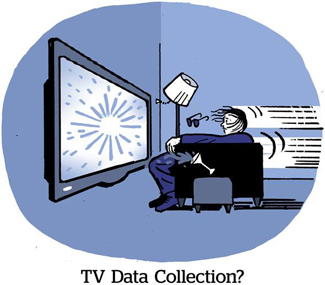
TV has a transparency problem.
It’s almost impossible for advertisers to know who’s really sitting in front of a TV screen, and they typically aren’t told what content their ads are running against, either.
In the spirit of everything old is new again, TV measurement companies are turning to panels for help.
And, on Tuesday, panel-based measurement provider TVision announced a $16 million venture round led by alternative TV measurement provider iSpot with participation from SIG Capital, Accomplice and Golden Ventures. This brings TVision total funding to $58 million.
TVision plans to use the money to build more measurement tools that count co-viewing using both panel and device-level data. These tools will integrate with iSpot’s existing cross-platform measurement technology.
The idea, said iSpot CEO Sean Muller, is to bring a “more structured approach to measuring co-viewing on CTV in a way the industry can transact against.”
Combining co-viewing and show-level viewership data will help introduce much-needed transparency to campaign measurement, said TVision CEO Yan Liu, who noted that buyers aren’t the only ones pushing for more transparency. Sellers are also keen.
The more confident advertisers are with their buys, Liu said, the more they’re likely to pay.
Personified
TV ad impressions are typically measured at the household rather than the individual level.
TVision uses eye-tracking technology to measure attention and second-by-second program viewership across an opted-in panel of 5,000 US households in 25 DMAs that account for roughly 14,000 people. Because TVision collects data at the device level, its panel is deterministic, Liu said.
Although TVision has partnered with individual media companies on measurement, iSpot’s strategic investment marks the first time that TVision’s viewership data will be fully incorporated into iSpot’s cross-channel measurement stack.
ISpot first started working with TVision in 2019 to analyze co-viewing behavior by modeling insights gathered from TVision’s in-home panel.
Overlaying TVision’s viewing panel with census-level data, for example, can give buyers and sellers a better idea of which viewer within a household is actually watching a given program and/or ad.
Together, iSpot and TVision will start applying that approach to CTV co-viewing, and iSpot’s investment gives it some exclusive access to TVision’s data.
Person-level measurement is especially lacking in CTV, Muller said.
Transacting against a household device-level impression without being able to count the individual audience behind those impressions is a missed opportunity for publishers, he said, because advertisers pay steep premiums to know and reach their audience.
ISpot is hoping to expand CTV co-viewing metrics in time for next year’s upfronts.
Truth serum 
TVision is known in the marketplace for measuring attention, iSpot’s Muller said, but what’s most compelling about its offering is the ability to track second-by-second programming viewership data.
In addition to eye-tracking technology, which panelists install on their devices, TVision measures TV viewing across 900 streaming apps and publishers, including cable operators and MVPDs. TVision relies on automatic content recognition (ACR) to track content across apps at the show level.
Contextualizing viewing behavior with an understanding of content programming gives advertisers the higher degree of transparency they’ve been demanding for their media buys.
But publishers don’t typically share that information, Liu said, and, according to Muller, media partners that log and share program-level data are “few and far between.”
If publishers won’t share program data, however, panels can help reveal it, Liu said.
Measure up
Although buyers are the most vocal in calling for better transparency, it would also make the lives of measurement intermediaries easier.
“CTV measurement is a total mess,” Muller said.
But ACR data can capture programming viewership as it happens, he said, and fill in the gaps of audience-focused panels. That’s why iSpot is betting big on ACR to underpin its measurement solution, Muller said.
And iSpot is far from the only measurement provider competing for ACR data.
Samba TV just acquired AI startup Disruptel to flesh out its ACR tech, which it has a patent for, and Innovid bought TVSquared earlier this year, which uses Samba’s ACR tech.
VideoAmp also added in-program analysis to its measurement last month because buyers are practically begging to know where their ads are appearing.
The bottom line is that buyers want more information in exchange for the premium CPMs they’re paying – and that data does exist. It’s just a matter of conveying it.
With this latest investment in TVision, Muller said, “we’re going to start bringing more visibility to the buy side with more specifics about where their ads are actually running.”
Because right now, he said, CTV measurement is “just a black box.”






 By
By 



